Text
attention this is your captain speaking chag sameach pesach to all celebrating and a reminder do not open the airlock to greet elijah the vulcan rabbinic council ruled that opening the door to the room where the seder is occurring is sufficient elijah can get on a starship just fine himself he just likes to be personally invited in to your seder we dont need another incident like last year thank you
12K notes
·
View notes
Text
as an autistic jew, passover is objectively the best holiday because it’s a dinner party with a script that everyone has to follow
12K notes
·
View notes
Text


two sides of the same coin
#...the bnha strategy of turning everyone into the adorable kids version of themselves...#also cute!!!!#hxh
487 notes
·
View notes
Text

2025 marks the 10th Anniversary of the HXHBB!!!
The Hunter X Hunter Big Bang has been running since 2016, having a total of 600+ participants, 15+ mods, and new content to bring together old and new fans in a collaborative space!
In honor of the HXHBB running for the 10th year, a compilation Zine will be put together to showcase the most favorite works from participants! A Big Bang is a writer and artist focused fandom event where writers create large scale stories and artists create works based on them creating a big bang of content at the conclusion of the event!
ANYONE who has joined the HXHBB from 2016-2024 is able to share their favorite work to this compilation 10 Year Anniversary Zine!
Participants can submit their work from Feb - Aug! Participants in the 2024 HXHBB can submit their 2024 work if they feel that it is their favorite and most fulfilling HXHBB submission!
The HXHBB 10 YEAR ANNIVERSARY ZINE/COMPILATION is a huge THANK YOU for all the years of hard work and talent!!!!!
For Artists interested in joining this project, the HXHBB24 is STILL accepting artists until March 31st so PLEASE JOIN if you want to be included!
The hunterxhunterbb has archived works from 2016-2023 so please check our work from over the years!
THE HXHBB Anniversary Project will be released for the 2025 HXHBB!!!!!
Thank you to @mysandwichranaway for The HXHBB Logo!
Thank you to everyone who has joined, contributed, Pinch hit, been a beta, modded, or encouraged others to join a Fandom Event of this size! The HXHBB team appreciates each and every one of you!!
We hope to see faces old and new submit works to this project!!
Keep creating and happy Hunting!
- HXHBB Team
Sign up for the HXHBB24 here:
Submit your work to the HXHBB 10 YEAR ANNIVERSARY ZINE HERE:
#a hxhbb zine is such a fun idea#the greed island one worked great#and why NOT include as many excerpts as possible in a digital zine its not like youll run out of space#hxh#hxhbb#hxhbbzine
111 notes
·
View notes
Text

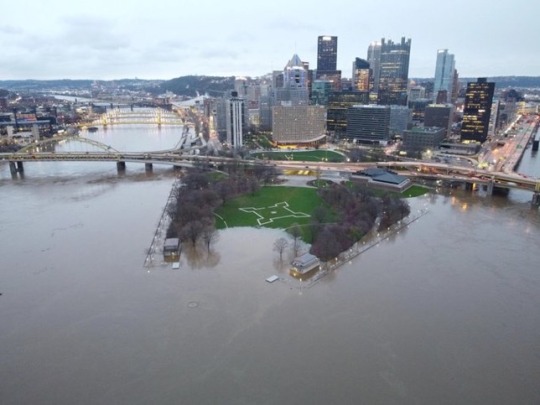

pittsburgh is underwater btw
#good thing global warming is a hoax invented by the chinese otherwise all of this would be very concerning#nature!!
130 notes
·
View notes
Text
The more I think Phantom Troupe thoughts, the more I become convinced that "actually the phantom troupe wasn't responsible for the Kurta Clan massacre" is the funniest twist the manga could make, BTW.
Not in a "the Phantom Troupe did nothing wrong" kind of way (bleugh), but in a "they are a group of thieves and mass murderers but THIS PARTICULAR mass murder was someone else" kind of way.
Partially because Kurapika starts the manga SO SURE it was them, and instead of asking what evidence he had we all just accepted it.
Partially because it would be in character for what we know about Uvo for him to lie about committing mass murder to Kurapika just for the purpose of motivating him and making it a better fight.**
Partially because FOR YEARS the fandom has interpreted Chrollo's cryptic remarks when Kurapika kidnaps him and interrogates him in the car as evidence of his solipsism or his sociopathy... But what if he's being cryptic because he doesn't want to tell the truth about what happened (that the phantom troupe didn't do it), for whatever reason*** but he also knows someone on Kurapika's team can tell if he's lying? So he just says something technically true, and let's Kurapika draw his own conclusions...
But mostly because it would make some parts of the fandom real Big Mad. Haha.
Anyway, I'm going to like ...convince myself this is true if I keep this up, so just to be clear, I don't have any evidence that they didn't do it. I DO think that would be a massively funny (read: interesting, unexpected) turn for the manga to take.
**The 1999 anime actually has a similar plot point with Killua during the Hunter Exam... It's been a while but I FROM WHAT I REMEMBER Killua takes credit for killing this girl's father and fights her even though it was Illumi who killed him, just because karmically he is guilty of killing a lot of people so it's not like he's innocent in general, even if he didn't kill this particular person. And because avengers trying to get him is such a common thing that he doesn't even bother trying to explain himself to them... it's episode 11 of the 1999 anime btw if someone wants to check that I'm not totally misremembering this.
***Why would Chrollo not simply say they didn't do it, if they didn't do it? Maybe they were paid to take the blame. Maybe they have accepted blame for 10 years to bolster their rep as mass murderers and it would be weird to back out now. Maybe he doesn't think Kurapika would believe him - Melody or not - if he said they didn't do it, and he doesn't have evidence they didn't do it, so he finds it pointless to argue. There could be many reasons. But those lines in the car have been weird for a long time, I would love an explanation from Togashi for why Chrollo was such a weirdo in that scene.
#someone reblogged this so here it is again#i've reached the point where i dont really expect to see killua or gon on screen again but i would like a resolution to kurapika's deal#and i think having a twist up in mind can be a kind of motivation for a writer to finish their story#so like fingers crossed we get SOME kind of closure anyway#hxh#hxh meta#phantom troupe thoughts
137 notes
·
View notes
Text
Excerpt from this story from the New York Times:
Cities around the world face a daunting challenge in the era of climate change: Supercharged rainstorms are turning streets into rivers, flooding subway systems and inundating residential neighborhoods, often with deadly consequences.
Kongjian Yu, a landscape architect and professor at Peking University, is developing what might seem like a counterintuitive response: Let the water in.
“You cannot fight water,” he said. “You have to adapt to it.”
Instead of putting in more drainage pipes, building flood walls and channeling rivers between concrete embankments, which is the usual approach to managing water, Mr. Yu wants to dissipate the destructive force of floodwaters by slowing them and giving them room to spread out.
Mr. Yu calls the concept “sponge city” and says it’s like “doing tai chi with water,” a reference to the Chinese martial art in which an opponent’s energy and moves are redirected, not resisted.
“It’s a whole philosophy, a new way of dealing with water,” he said.
Through his Beijing-based company, Turenscape, one of the world’s largest landscape architecture firms, Mr. Yu has overseen the development of hundreds of landscaped urban water parks in China where runoff from flash floods is diverted to soak into the ground or be absorbed into constructed wetlands.
Mr. Yu said growing up in a village in Zhejiang Province toward the end of the Cultural Revolution showed him how earlier generations in rural China had “made friends with water.” Farmers in his region built terraces, berms and ponds to direct and to store excess water during the rainy season.
That stood in sharp contrast to the urban landscapes in modern China. Traditionally, cities in China would set aside areas capable of absorbing floodwaters. But such nature-friendly urban design largely ended with the Industrial Revolution, Mr. Yu said. More recently, millions of acres have been paved over to build cities, some of them rising up virtually overnight.
The sponge city program was formally inaugurated by President Xi Jinping in 2015 with pilot projects in 16 Chinese cities and has since expanded to more than 640 sites in 250 municipalities around the country.
You can see the concept in Houtan Park, a mile-long strip of greenery along the Huangpu River in Shanghai that Mr. Yu designed on a former industrial site.
Terraces planted with bamboo and native forbs and grasses are bisected by wooden walkways that zigzag between ponds and constructed wetlands. The wetlands filter water, slow the river’s flow and provide habitat for waterfowl and spawning fish.
The goal, at least on paper, is that by 2030, 70 percent of the rain that falls on China’s sponge cities during extreme weather events should be absorbed locally rather than accumulate in the streets.
Whether enough land can be converted is a key question.
888 notes
·
View notes
Note
I saw the previous question you were asked about the ending D of hxh. Along those same lines, I wanted to ask you, do you think killugon will continue to be “something” in hxh? By something I mean that I thought that Killugon was something subtextual in hxh but done on purpose, and that the ending was going to be them being "canon" but in a subtextual way like "we will be together forever" or something like that, do you think that killugon will continue to be “something” or Togashi never saw them in that way?
thank you for your answer. I really enjoy your hxh takes.
Hi anon, thanks so much for this ask!
I think the Killugon subtext is on purpose, as you said, 1) because Togashi is an intentional writer, and 2) there's just SO much subtext, it would be hard to have written it that way accidentally. There's tons and tons of posts on Tumblr about this, I'll try to find a few when I get home. I know @hunterxhell and @telehxhtrash have written a few posts about it and I have a few at the link:
Whether Togashi will continue to keep them together - even subtextually - I don't know. He does write shippy subtext often, sometimes even becoming quasi-canon like Illumi's murder-engagement to Hisoka. And when they part at the world tree, they say it's "for now" and Alluka says she'll "give Killua back" to Gon after she's monopolized him for a while.
Then again, YYH had the shippy subtext, too, but Yusuke still got married to Keiko in the end...
I don't expect them to **officially** end up together, unless something really changes at Weekly Shounen Jump between now and when HxH ends. There's a reason his pitch for a baseball(?) manga about gay and trans characters was rejected in the 90s.
Personally, I'd want to see "something" in the ending... Or honestly more than something... Like they are "partners" in a business venture but maybe another kind of partner too, you know? Unstated but we'd all know what it means. That kind of thing. As close to officially together as you can get without bringing down the wrath of the editors / close-minded fans. HxH is often ambiguous so something where they're ambiguously together would be right in line with how the manga is. I think it's equally likely they'd end up with other people though - the first love you lost before you realized what it was.
But I'm not a fan of this "Gon is with Noko but he really loves Killua" stuff because like I said in the other ask, it just makes me feel bad for Noko!
So there's your answer, and sorry it took me a few days! Baby life, you know.
42 notes
·
View notes
Text
Kura Lisa
Fujimaki: After seeing the expressions of the characters that Togashi-sensei has drawn, the area that surprises me the most is the corner of the mouth. Kurapika for example would always have this kind of expression, where the corner of his mouth is always slanted upwards or downwards, but because the shift is very slight, it looks like he is smiling, but also expressionless at the same time. Is this intentional?
Togashi: It should be intentional. That is called an Archaic smile. I am insistent on drawing mysterious expressions that are a mix of different feelings. Also, when drawing these expressions, the corner of the mouth is the easiest area to handle.
18 notes
·
View notes
Text

Hello Paristans,
We are still looking for writers for the following topics for our VICE X VICE Zodiac Gossip Magazine!
Zodiac articles for the:
- Dragon
- Monkey
- Sheep
- Horse
- Cow
- Rabbit
- Tiger
- Boar (Leorio)
Additional Pages we would like to fill include:
- Paraging Scandal
- Ode to Netero
- additional quizzes
- Additional Pariston Article
- Additional Ging Article
Larger Articles are 350-500 words
Smaller articles are 50-150 words
Join us if you love gossip and scandal!!!
#Calling all piyon and mazaistrom fans#You know you want to#59-200 words is such a small commitment#hxh zine#zodiac gossip zine#hxh
31 notes
·
View notes
Text
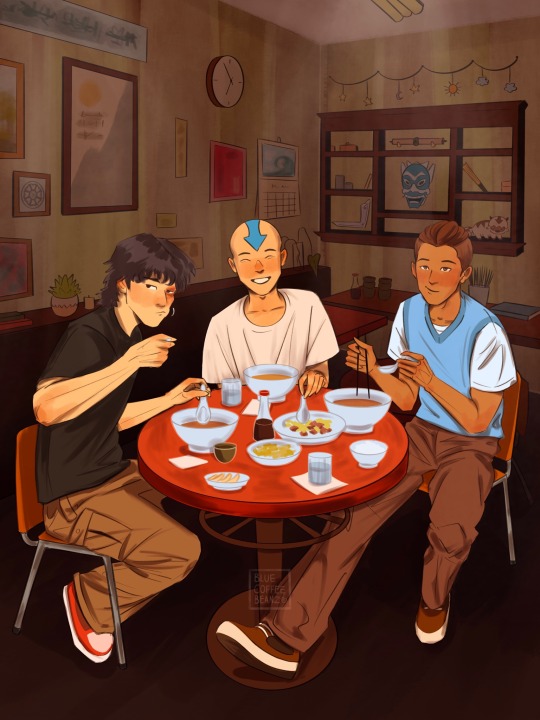
post-lecture noodles with the boys ✌️
15K notes
·
View notes
Text
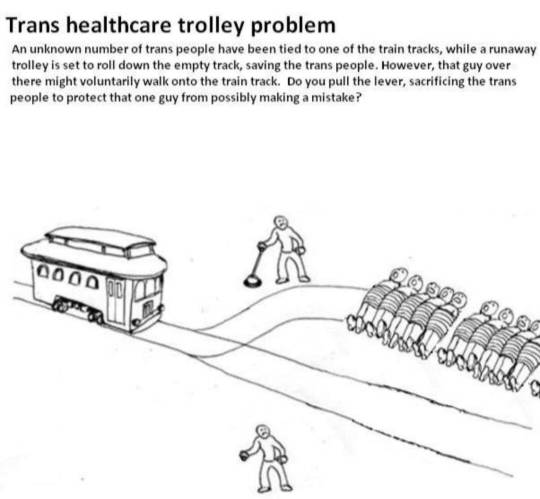
New reaction pic for y'all to be used when you get into an argument about trans healthcare and your opponent starts talking about the 0.8% or whatever or trans people who regret transitioning
40K notes
·
View notes
Text
i wrote something for the @hxhflowerzine !!! read it on ao3 OR DONT because the zine is OUT NOW FOR FREE DOWNLOAD!!!
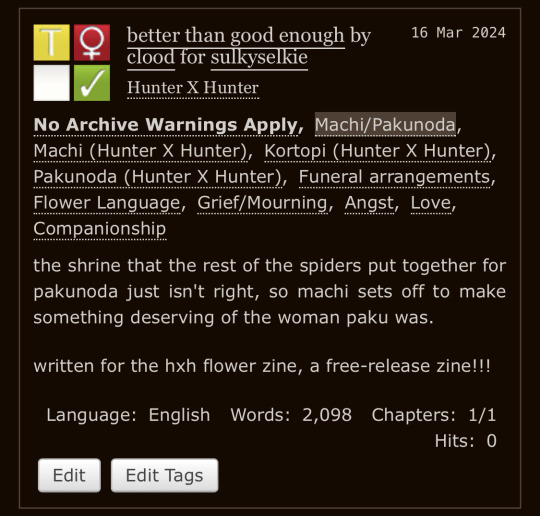
22 notes
·
View notes
Note
hey! Good day :) here to ask a question!! I was wondering about your process for analysis, character analysis, theme analysis- do you just write or are there specific things you look for? I suppose I’m curious if you have an idea/general gist of what you’re doing or steps you take to do your breakdowns. I’m trying to do something similar out of interest and your works are simply fascinating to read. I look up to your writing a lot!
hello!! Can I ask how you started analysing shows, how you went about it? I’m learning literary analysis and trying to do the same for hunter x hunter but I find it infinitely harder to analyse shows. Especially since I most notably consider diction in literary analysis lol
Hi!
Thank you for your nice words anon(s) and yay! I love meta-asks <3<3<3
So, it depends on the meta. In general, I try to focus on a specific topic, which can be:
a character (arc + foiling between characters)
a theme
the use of a specific motif, when it comes to a character or a theme
These are my three favourite kinds of analyses, but there are other types, as well. For example, some people are really into plot theories/predictions. Others prefer to focus on characters from a psychological viewpoint. Some other writers like to use philosophical lens or to compare different works. It really depends on your preference.
My preference is mostly for thematic analyses. This means that my character metas too tend to use a thematic lens. So...
WHAT IS THE THEME?
In short, the theme of a story is both:
the topic the story is exploring
the moral of the story, aka a phrase which summarizes its message
Stories explores topics through characters and plot, while the way the conflict is solved tells us the moral.
Some examples:
RWBY's main topic is humanity in both its weakness and strength and its moral is that victory is in a simple soul
Madoka's main topic is wishes and its moral is that it is worth to want things and to fight for them, even if it is painful
HXH is strange structurally, but its main topic is self-search, with its moral being that a person should not focus on the goal, but enjoy the journey
All of these messages and ideas aren't just things stated in dialogues (even if someone saying the theme helps). They emerge from the story itself.
RWBY's main conflict is about a destroyed world (remnant) surviving the anger of an evil witch (Salem). If humans let hate divide them, they lose. If they unite, they win. The main thematic question is then... can humans make the right choice? And the answer is that they can, as long as they remain simple souls (Ruby, but also Pyrrha at Beacon, Blake in Managerie, Yang in Mistral, Weiss with her family, JNR when they tag along and Penny in Atlas). The main message is that several people making the right choice leads to change. And that is humanity. This is why the characters keep being asked to give up their idealism and to embrace a more utilitarian way of doing things. And this is why every time they refuse and stick to their idealism. The conflict itself keeps testing their resolution.
Madoka's power system works through wishes, so the girls' powers and their backstories are all defined by their wishes and by how they relate to them. Madoka doesn't know what she wants. Homura's wish turns into an obsession. Mami makes a wish too early and thinks only about herself. Kyouko and Sayaka make a wish for someone else and have opposite reactions to their wishes ending poorly. Finally, it is revealed the girls' wishes are literally the force that keeps the world at balance. So, the plot, character arcs, conflict and worldbuilding are all about wishes.
HXH is made up of several arcs and each arc has its own theme. That said, the overall structure conveys the main theme. Gon's objective is to find Ging, but he keeps taking detours and getting engulfed in unrelated conflicts. However, the moment he meets Ging he realizes it is not his father who defines him, but rather it is all the people he met in his journey and his own experiences. Basically, HXH's strange structure conveys the main theme.
So, the theme (both topic and moral) should emerge by the characters, the worldbuilding, the conflict and sometimes even by the structure itself. In order to find it, one should start with the topic and ask themselves "What does the story really talk about?". The answer to this question will let you understand the theme as topic. The second step is to see how the story explores it.
DIFFERENT POINTS OF VIEW ON THE TOPIC
There are different ways a story can explore a topic. Still, the best stories have different perspectives clash with each other. Very often these different points of view are embodied by different characters.
Here are some examples, with some linked metas that explore the respective stories more in depth.
Madoka (topic= wishes):

Homura is determined to fulfill her wish no matter what
Kyubey is her opposite, as they are unable to wish since they lack feelings. This is why they need to recruit girls into creating energy through wishes
Madoka is in the middle, as she wants to wish for something, but doesn't know what
Mami, Kyouko and Sayaka all explore negative effects linked to wishes, which are connected to other secondary themes. Specifically, Mami explores the consequences of an immature wish, while Sayaka and Kyouko explore the selfishness/selflessness inherent in wishes
The conflict is solved through Madoka learning about the price of wishes, but still choosing to make a wish and to sacrifice her whole self for it. This ending conveys a specific moral: despite the pain and sacrifice that comes with them, wishes are still beautiful and worth it all. If Madoka had chosen to give up being a magical girl and had ended up the series without making a wish, the moral would have been the opposite: that a normal life is better than grandiose and dangerous dreams.
Monster (topic = the value of life)
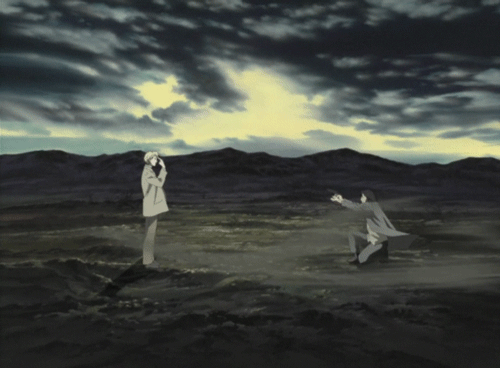
Tenma believes that all lives are equal, which is why he chooses to save Johan as a child, despite being ordered to operate a far more influential patient.
Eva and Nina believe that not all lives are equal. In particular, Eva thinks that social status and importance in society influence the value of one's life. Nina instead believes that people who commit crime should be punished and lose their lives.
Johan believes no-life has value, including his own. In his words, the only thing all humans are equal in is death.
Here, the moral is conveyed through the Tenma/Nina vs Johan's conflict. Tenma is tested in his beliefs, but ultimately does not abandon them and ends the story by saving Johan. Nina instead is asked to change her mind, as she ends the story embracing Tenma's point of view.
RWBY - The Atlas Arc (topic = trust)
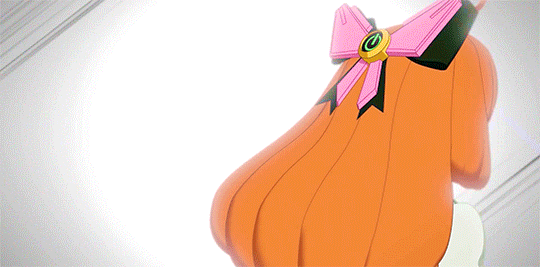
Ozpin lacks trust, as he is unable to trust others, no matter how loyal or dedicated to his cause they are
Ruby wants to "trust safely". She wants others, like Ironwood, to prove themselves to her before disclosing the truth to them
Ironwood is initially on Ruby's same page, but he spirals and comes to embody the "enemy of trust" aka control. He doesn't trust others, but wants to control them.
Oscar embodies trust, as he wants to trust Ironwood since the beginning. Even later on, he keeps on trusting people like Hazel and Emerald who are his enemies.
Cinder embodies another "enemy of trust", aka manipulation. She doesn't need to trust others to work with them, as she can use their feelings and wishes against them.
Penny embodies faith, which is a more extreme form of trust. She sacrifices herself and leaves the maiden power to Winter. She has no proof Winter will be able to save Weiss, Jaune or the relic, but she entrusts the future to her.
All these characters struggle with trust and its dangers. Some, like Ozpin, Ironwood and Cinder decide that trusting is too dangerous. Others, like Ruby, Penny and Oscar realize that to trust is the only way to move forward. Moreover, they learn there is not way to trust safely. As a matter of fact the moral of the arc is that "trust is a risk" and risks mean that things can end up badly. Still, not to take risk means to give up hope.
Hazbin Hotel - You didn't know song (topic= knowledge)
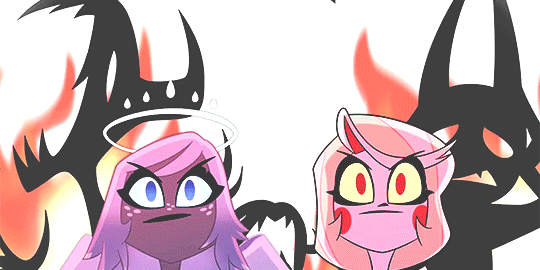
This song explores the idea of knowlege. The characters are after all in the middle of a questioning, which leads to several secrets coming out. Moreover, throughout it all the characters either admit or realize how ignorant they all are. The way they deal with this lack of knowledge establishes different thematic stances.
Charlie and Emily are both naive and ignore the darkest sides of their loved ones. Charlie doesn't know Vaggie used to be an exorcist and Emily has no idea Sera ordered the exterminations. Still, their answer to ignorance is to keep on questioning. They have no idea why only certain souls are admitted in heaven. Still, they think it is important to investigate the phenomenon and use it as evidence that there might be hope for the spirits in hell.
Lute and Adam don't know why some spirits end up in hell and others in heaven. Still, they do not bother to question it. So, Adam is caught by surprise by Charlie's question and has to improvise an answer. Not only that, but even later on the duo insist that Angel not being in Heaven proves he is unholy. And that's it.
Sera does know about the extermination, as she knows the system is unfair. Still, she refuses to question it and forbids others to do the same. She is the only one whose sin isn't ignornace, but knowledge.
There is no a clear thematic resolution to the question posed by the song. This is because the series is not over yet. However, the scene sets up the theme and the way characters will deal with it in later seasons will give us the moral.
As you can see, not only whole stories (like Madoka, or Monster) have themes, but also arcs (RWBY) and even episodes or scenes (Hazbin Hotel). That said, the way to go at it is always the same. Pintpoint the main topic and start investigate how the characters or the worldbuilding deal with it. You are gonna get several stances. The one which emeges victorious is the moral.
Let's highlight that the moral is not always embodied by the protagonist. For example, in the Madoka and RWBY's examples, Madoka and Ruby are initially at a loss and come to learn the moral by the end of the story (for Madoka) and arc (for Ruby). Similarly, Tenma initially does believe the moral, but doubts it throughout the story, only to be reminded and helped by other characters (like Nina).
In any case, the way the protagonist and characters in general relate to the main theme and to secondary themes is key for their arcs.
CHARACTERS AND THEME
When it comes to theme a character can either:
Believe the moral since the beginning
Not believe the moral since the beginning
In the first case, the character either stops believing the moral by the end (negative arc) or keeps believing the moral until the end (positive arc). In the second case, the character either learns the moral (positive arc) or doesn't learn the moral (negative arc).
In short, the story keeps challenging the character on their beliefs and they must either stick to their point of view or change it, depending if they believe in the moral since the beginning or not.
Exhibit A:

Charlie's belief that sinners can be redeemed is right. Still, in the beginning nobody else agrees with her, so she is challenged by the world around her. Her objective is not to lose faith in the Hazbin Hotel and to inspire others to change their mind too. Throughout her journey, she is bound to grow too. She starts as sheltered and naive with a simplistic idea of what redemption is. By the end, she will gain a deeper understanding of redempion and will grow as a result.
Exhibit B:

Eren's journey is about realizing what freedom (the main topic) is about. The problem is that he fixates himself on the idea that freedom means no boundaries, either natural nor humans. This leads him to embrace destruction and nihilism and to lose himself. In the end, the character who realizes what freedom truly is is Mikasa. She doesn't discard her bond with Eren, but is still able to make independent choices and to live as herself. In short, Eren doesn't learn the moral, hence why he spirals instead of growing.
Charlie is a protagonist who knows the moral and will grow with it in a positive arc. Eren is a protagonist who doesn't know the moral and never learns it. This is why he has a tragic negative arc.
These are just two examples, but there can be different combinations. By interrogating yourself on how characters relate to a theme, you get better a better understanding of their role in the story and of their overall arcs.
Still, how to find themes in a story? Luckily, each text is full of hints that are there for us to interpret them.
MOTIFS
Motifs are repetitive details within a story, which are used to communicate themes.
Anything can be a motif: a line, a musical tune, a specific imagery, an object. By repeating them in key moments throughout a narrative, they become symbols, which means they can lead to bigger metaphors and convey specific meanings.
In the song More Than Anything, dream is one of the main topics. We realize it because the characters keep mentioning it. At the same time, light keeps popping up. Lucifer summons light and throws it away, Charlie rememebrs a light show Lucifer imrpovised for her. Lucifer and Charlie start the song in the shadow and they end it in the light. This means that "light" is a motif throughout the song and by seeing how it is used we better understand the theme and the relationship between the two characters. We understand that light is a metaphor for dreams. Lucifer gives up on it, Charlie is inspired by it and eventually Lucifer summons it back as he has decided to believe in Charlie's dream. By looking at the way light is used, we can see that Charlie teaches Lucifer the moral that it is worth it to fight for dreams and not to give up on them.
In the CAA of HXH, gungi is a motif that comments both the topic of humanity and Meruem and Komugi's relationship. Their matches become a metaphor of monstrosity vs humanity, as humanity slowly conquers Meruem to the point he himself chooses to live and die as a human, rather than the King of the Ants. Similarly, Kokoriko symbolically becomes Komugi and Meruem's child, in the sense they give birth to this move and evolve the game.
Sometimes, their meaning is unique to the story. For example, gungi is a motif that makes sense within HxH and can't be brought outside of the series, as it is not a real world game. It only exists in that universe. Some other times, a motif can tie to bigger sets of symbols. For example, light and shadow are universal symbols that bring with them several additional meanings:
Good and Evil
The Jungian persona shadow
In the Hazbin Hotel song the first dychotomy doesn't fit, while the second one does. Initially both Lucifer and Charlie hide things from each other (shadow), whereas by the end they show who they are (light).
In short, to analyze a story, you should find its key motifs. They are hints to better understand the theme and the characters. Different stories will use different motifs and tie them to different wider sets of symbols. To find the right ones can help a lot in better understanding a story, as a whole.
Some examples:
RWBY uses fairy tales and alchemy as its main motif, so these two sets of symbols are the most useful to analyze the series
HxH is a shonen and uses its powers and fights to convey character arcs and themes, so to analyze one's nen abilities helps a lot
Hazbin Hotel is a musical series that takes inspiration from religion and mythology. So, it is probable that the best understanding of it will come from analyzing its songs and from looking into its religion inspiration
Of course this doesn't mean you should only use one motif to analyze a story. For example, you can use RWBY's semblances to look into the characters, as well. And there are some fairy tale allusions in Hazbin too. In the end, it is about using what best helps you understand a story as a whole.
What is more, there are general sets of symbols that can be useful in most stories, such as jungian archetypes. Finally, you might want to start from other aspects of the story itself, rather than theme or characters or plot. For example, you might be drawn to the world-building and realize it is used in a special way to explore the theme. Or you might be curious about character designs and see that they have their own symbolism (for example, I believe RWBY ones do and probably Hazbin Hotel ones, as well).
SOME PRACTICAL ADVICE
I have linked in the title of each paragraph, but this last one an article by @septembercfawkes. Her posts are great to better understand narrative structure and I found them enlightening.
I think the best thing you can do is to start with focused metas. Choose a scene, a character, a motif that intrigues you and start exploring it. It is better to start small and to narrow your focus, it would be easier to organize your article.
I usually outline the contents of the meta before starting to write it. Still, it sometimes changes as I keep writing.
It can be useful to write at the beginning of your analysis what you are gonna do. It will help you remember what the point of the meta is. For example, in my RWBY allusion meta or HxH nen meta, I always start with the motif I am analyzing. I summarize the fairy tale (even if many people know it already) and I explain what the character's ability is about. It helps organizing the flow and the contents.
The more you analyze the better you become at it, so it is just a matter of starting :)
Thank you for the asks, I hope this was helpful and not too much confusing!
Have a nice day!
#this is so much more information than i think anyone - asker included - was expecting i love it#hxh#hxh meta
43 notes
·
View notes
Text
"With “green corridors” that mimic the natural forest, the Colombian city is driving down temperatures — and could become five degrees cooler over the next few decades.
In the face of a rapidly heating planet, the City of Eternal Spring — nicknamed so thanks to its year-round temperate climate — has found a way to keep its cool.
Previously, Medellín had undergone years of rapid urban expansion, which led to a severe urban heat island effect — raising temperatures in the city to significantly higher than in the surrounding suburban and rural areas. Roads and other concrete infrastructure absorb and maintain the sun’s heat for much longer than green infrastructure.
“Medellín grew at the expense of green spaces and vegetation,” says Pilar Vargas, a forest engineer working for City Hall. “We built and built and built. There wasn’t a lot of thought about the impact on the climate. It became obvious that had to change.”
Efforts began in 2016 under Medellín’s then mayor, Federico Gutiérrez (who, after completing one term in 2019, was re-elected at the end of 2023). The city launched a new approach to its urban development — one that focused on people and plants.
The $16.3 million initiative led to the creation of 30 Green Corridors along the city’s roads and waterways, improving or producing more than 70 hectares of green space, which includes 20 kilometers of shaded routes with cycle lanes and pedestrian paths.
These plant and tree-filled spaces — which connect all sorts of green areas such as the curb strips, squares, parks, vertical gardens, sidewalks, and even some of the seven hills that surround the city — produce fresh, cooling air in the face of urban heat. The corridors are also designed to mimic a natural forest with levels of low, medium and high plants, including native and tropical plants, bamboo grasses and palm trees.
Heat-trapping infrastructure like metro stations and bridges has also been greened as part of the project and government buildings have been adorned with green roofs and vertical gardens to beat the heat. The first of those was installed at Medellín’s City Hall, where nearly 100,000 plants and 12 species span the 1,810 square meter surface.
“It’s like urban acupuncture,” says Paula Zapata, advisor for Medellín at C40 Cities, a global network of about 100 of the world’s leading mayors. “The city is making these small interventions that together act to make a big impact.”
At the launch of the project, 120,000 individual plants and 12,500 trees were added to roads and parks across the city. By 2021, the figure had reached 2.5 million plants and 880,000 trees. Each has been carefully chosen to maximize their impact.
“The technical team thought a lot about the species used. They selected endemic ones that have a functional use,” explains Zapata.
The 72 species of plants and trees selected provide food for wildlife, help biodiversity to spread and fight air pollution. A study, for example, identified Mangifera indica as the best among six plant species found in Medellín at absorbing PM2.5 pollution — particulate matter that can cause asthma, bronchitis and heart disease — and surviving in polluted areas due to its “biochemical and biological mechanisms.”
And the urban planting continues to this day.
The groundwork is carried out by 150 citizen-gardeners like Pineda, who come from disadvantaged and minority backgrounds, with the support of 15 specialized forest engineers. Pineda is now the leader of a team of seven other gardeners who attend to corridors all across the city, shifting depending on the current priorities...
“I’m completely in favor of the corridors,” says [Victoria Perez, another citizen-gardener], who grew up in a poor suburb in the city of 2.5 million people. “It really improves the quality of life here.”
Wilmar Jesus, a 48-year-old Afro-Colombian farmer on his first day of the job, is pleased about the project’s possibilities for his own future. “I want to learn more and become better,” he says. “This gives me the opportunity to advance myself.”
The project’s wider impacts are like a breath of fresh air. Medellín’s temperatures fell by 2°C in the first three years of the program, and officials expect a further decrease of 4 to 5C over the next few decades, even taking into account climate change. In turn, City Hall says this will minimize the need for energy-intensive air conditioning...
In addition, the project has had a significant impact on air pollution. Between 2016 and 2019, the level of PM2.5 fell significantly, and in turn the city’s morbidity rate from acute respiratory infections decreased from 159.8 to 95.3 per 1,000 people [Note: That means the city's rate of people getting sick with lung/throat/respiratory infections.]
There’s also been a 34.6 percent rise in cycling in the city, likely due to the new bike paths built for the project, and biodiversity studies show that wildlife is coming back — one sample of five Green Corridors identified 30 different species of butterfly.
Other cities are already taking note. Bogotá and Barranquilla have adopted similar plans, among other Colombian cities, and last year São Paulo, Brazil, the largest city in South America, began expanding its corridors after launching them in 2022.
“For sure, Green Corridors could work in many other places,” says Zapata."
-via Reasons to Be Cheerful, March 4, 2024
12K notes
·
View notes
Text
i hate it when i cant even write a poem about something because its too obvious. like in the airbnb i was at i guess it used to be a kids room cause you could see the imprint of one little glow in the dark star that had been missed and painted over in landlord white. like that's a poem already what's the point
#teaboot's is so good#theres so little time to look at the ceiling they didnt even look at it while they were painting it#poetry
257K notes
·
View notes
